Hanami Dango Dumplings: History, Flavors & Recipe
Yen
Posted on March 18, 2021
Share:

As cherry blossom season creeps ever closer, pink, spring-themed snacks are popping up in convenience stores and supermarkets all over Japan! More than just the end of winter, the approach of spring means it’s time for the sakura cherry blossoms to start blooming, which, in turn, means hanami. And one of the most popular snacks during this time is hanami dango!
What is hanami?
Hanami is a Japanese word meaning flower viewing, describing the traditional Japanese practice of venturing outdoors to enjoy the sight of beautiful cherry blossoms, often with family or friends. Dating back to the 8th century, people in Japan still widely practice hanami today, finding it a fun and approachable way to engage with Japanese culture.
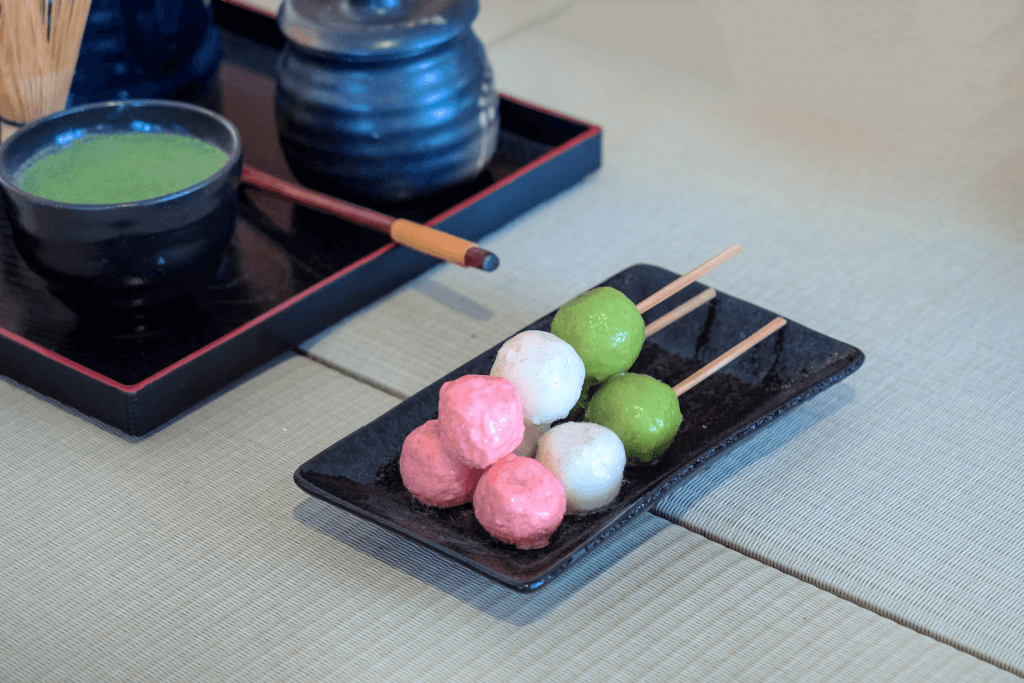
While hanami might refer to as little as a quick stroll around the sakura-filled parks of Tokyo, many people take advantage of the warming weather to have one of their first picnics of the year beneath the colorful blossoms! Seasonal and themed food is an integral part of Japanese culture, and hanami is no exception, with popular spring-themed treats being trendy at these gatherings. Alongside classics such as sakura mochi, inarizushi, and sakura onigiri, you’ll also find hanami dango, a Japanese rice dumpling dessert, especially for the occasion!
Looking for a taste of traditional Japan? Check out Sakuraco! Sakuraco sends traditional Japanese sweets, snacks, and tableware from across Japan to your door so that you can enjoy the experience!
What is hanami dango?
Hanami dango is a wagashi, or traditional Japanese sweet, consisting of three dumplings of sweetened rice flour colored pink, white, and green. The dumplings are typically served on a skewer and have a sweet and mild texture that is firm and chewy. At the same time, other types of dango are typically served with a topping such as kinako soybean flour, red bean paste, or a sweet soy glaze; hanami dango pairs best with the sight of the cherry trees, a full stomach of onigiri, and a flavorful green tea.
To the untrained eye, dango and mochi can often seem the same. However, unlike mochi, dango is traditionally made with non-glutinous, Japanese short-grain rice flour, while mochi uses glutinous rice grains. The ideal dango texture sparks much debate among enthusiasts, and Japanese recipes often propose varying flour types based on personal taste.
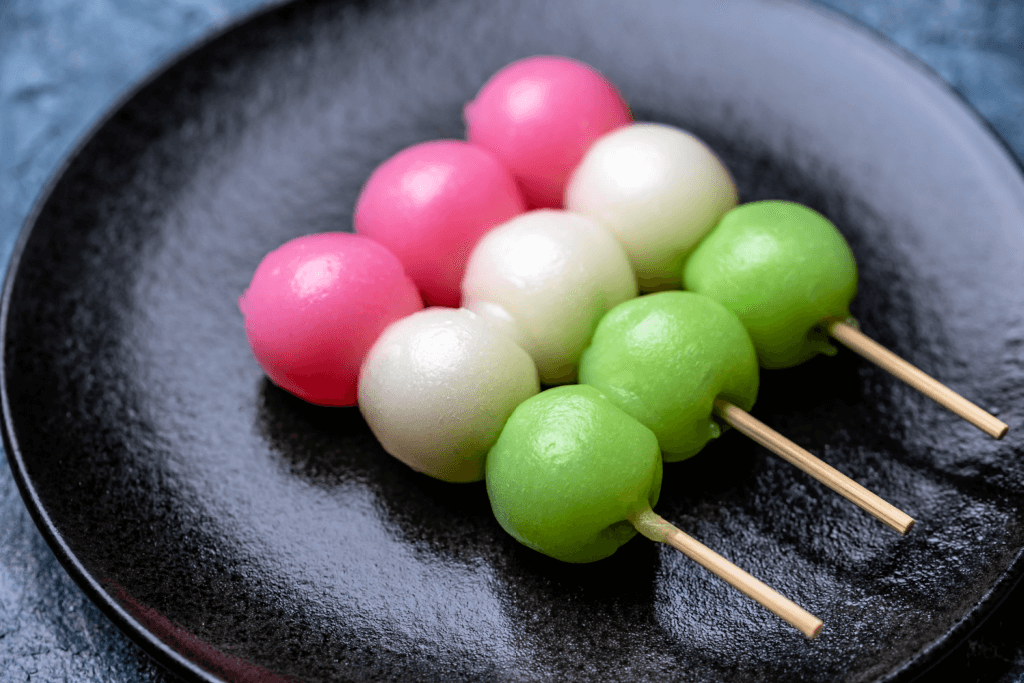
Some contend that non-glutinous rice flour might result in dense rather than chewy dango. A blend of non-glutinous and glutinous rice flour suits those desiring a bouncier consistency. Other suggestions include incorporating silken tofu or mochiko, a glutinous flour made by grinding the rice used for mochi. Either way, there’s plenty of room for experimentation!
The dango’s color can vary based on preference and ingredient availability. Previously, pink dango used purple perilla or pickled cherry blossoms for coloring. These days, however, red food coloring and strawberry powder are more popular (and convenient) solutions!
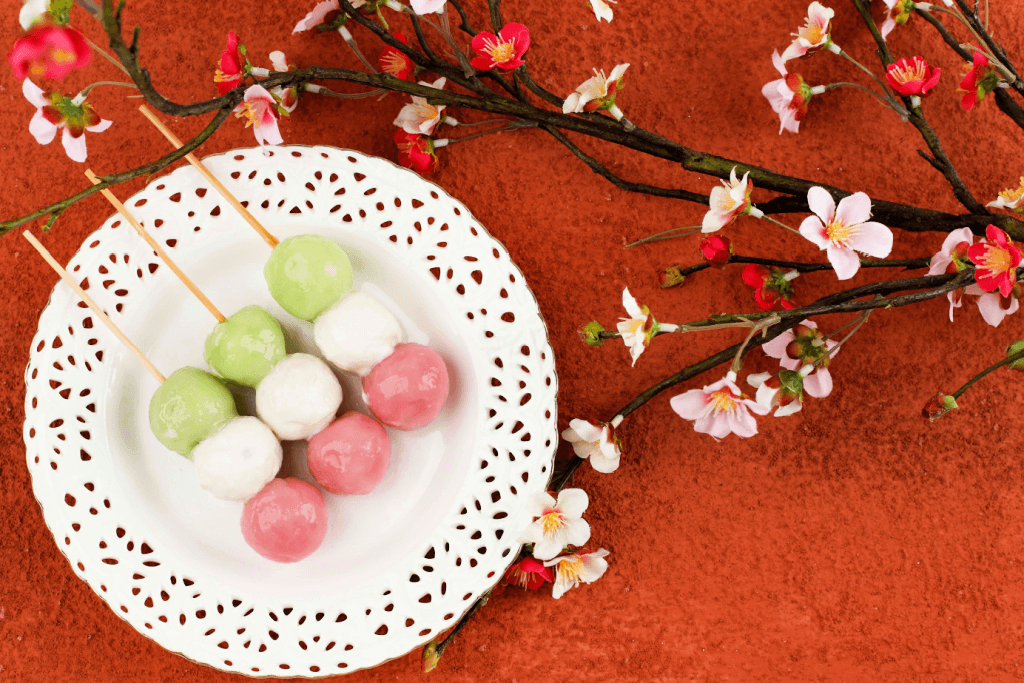
The green dango is colored with Japanese mugwort or yomogi. This makes it similar to a type of dango called kusa dango. In Japanese, kusa means “grass” and refers to the rich green color caused by the herb. Yomogi also gives the dango a mild, earthy flavor similar to kusa mochi, which also uses the ingredient. This herb is often difficult to find outside Japan. Many hanami dango recipes suggest substituting matcha powder or green food coloring.
The Origins and Symbolism Behind Dango
Now, you might wonder about the origins and symbolism of the pink, white, and green dango balls. There are several competing theories on the subject. The first theory suggests the balls represent the cherry blossom’s lifecycle, from pink buds to blooming white and green leaves. The second theory connects the treat to spring’s arrival, with pink blossoms and green grass replacing winter’s white snow.
The hanami dango’s allure undoubtedly stems from its lively and optimistic colors. While enjoyed throughout the year, it becomes a seasonal delight during cherry blossom season. Freshly made options are available at food stalls and festivals, making it ideal for spring celebrations.
Hanami Dango Dumplings: History, Flavors & Recipe
Luckily, suppose you can’t get your hands on any pre-made hanami dango this spring. In that case, the Internet is full of authentic hanami dango recipes, often with suggested substitutions for hard-to-find Japanese ingredients. The process itself is straightforward. First, combine rice flour, sugar, and hot water to form a putty-like dough.
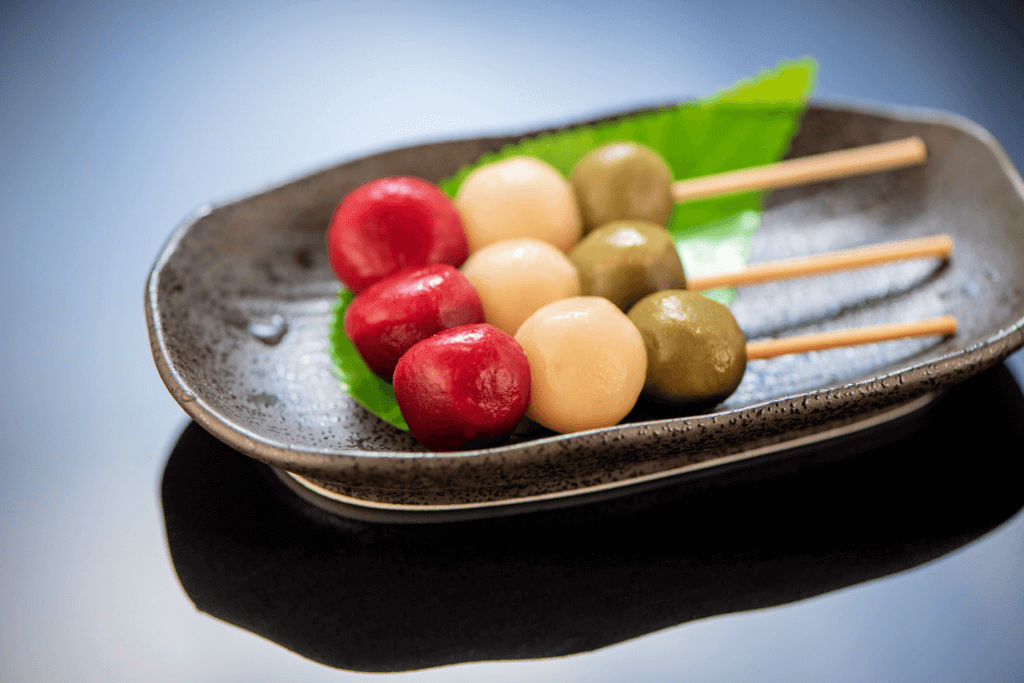
Cooks divide the dough into thirds for coloring. They use red food coloring or traditional ingredients for pink, yomogi or matcha for green, and leave white uncolored. Then, they roll the dough into bite-sized balls, boil them, cool them, and arrange them on a skewer. Recipes need less than 20 minutes and as few as four ingredients, so try it at home!
Funnily enough, hanami dango isn’t the only popular association between dumplings and flowers in Japan! The Japanese saying “hana yori dango” contrasts the two concepts. It suggests that functional things like dumplings hold more value than decorative items like flowers. However, hanami dango disproves this notion. These dumplings are both functional and decorative, and most importantly, delicious!

Discover authentic flavors with Sakuraco
Get Sakuraco 

Discover authentic flavors with Sakuraco
Get Sakuraco 
Related Articles
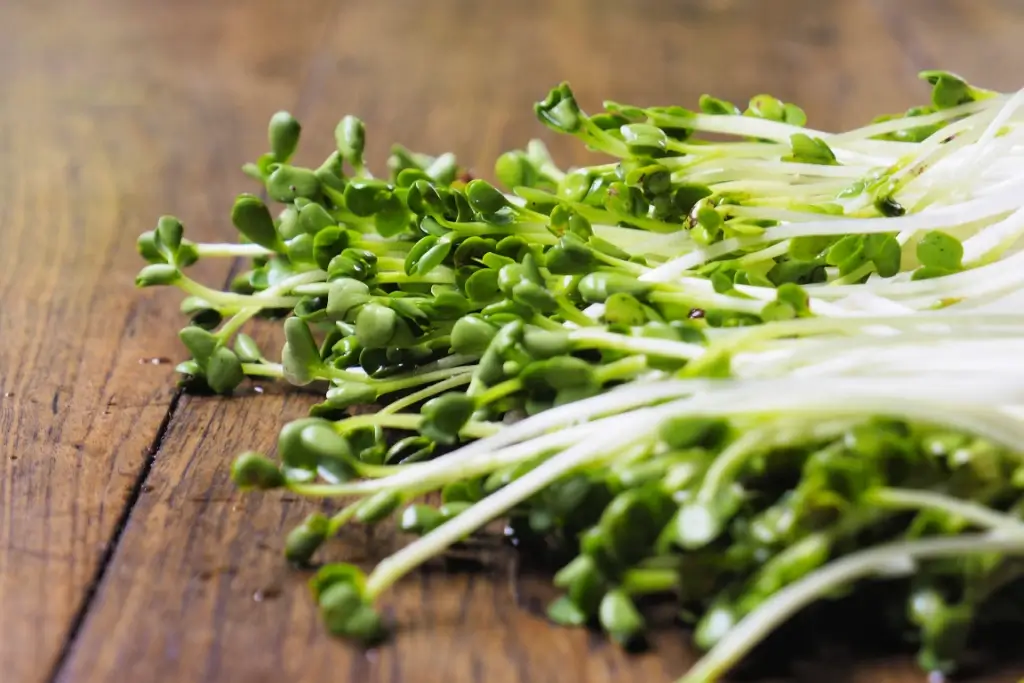
Kaiware and Amazing Japanese Herbs to Try!
Japanese herbs are an essential part of the country’s culinary tradition. One herb that stands out is kaiware, widely used in Japanese cuisine, thanks to its sharp taste and crisp texture that add a fresh and spicy kick to dishes.
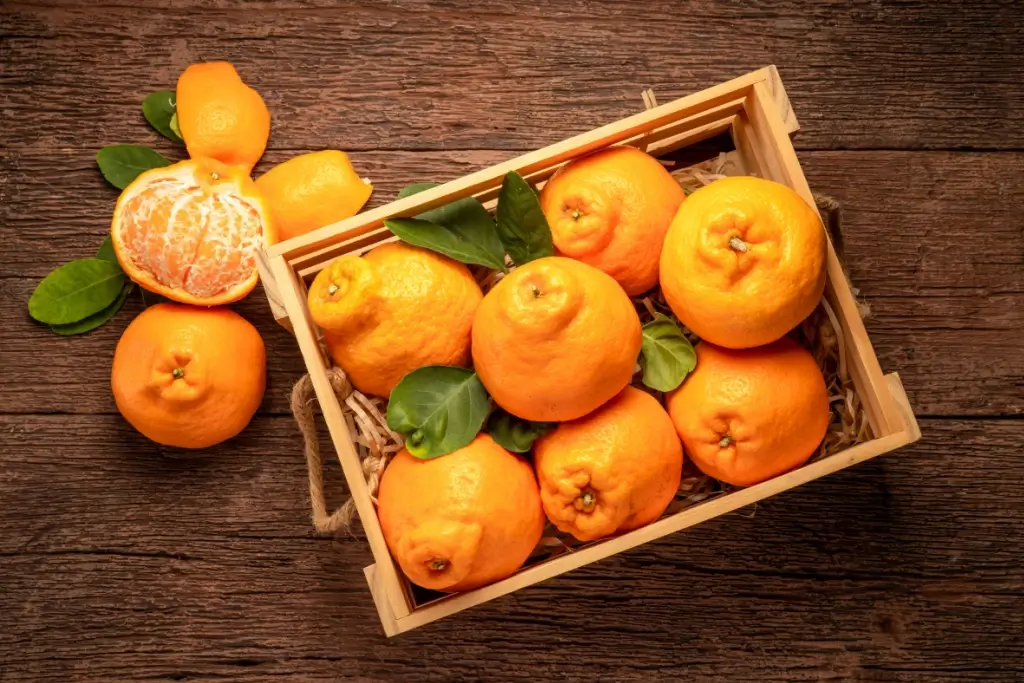
Dekopon and the Rarest Fruits from Japan
Japan is home to some of the world’s most unique and rare fruits. From dekopon to these fruits, they offer unique flavors! Local farmers grow each fruit with care and regional pride.
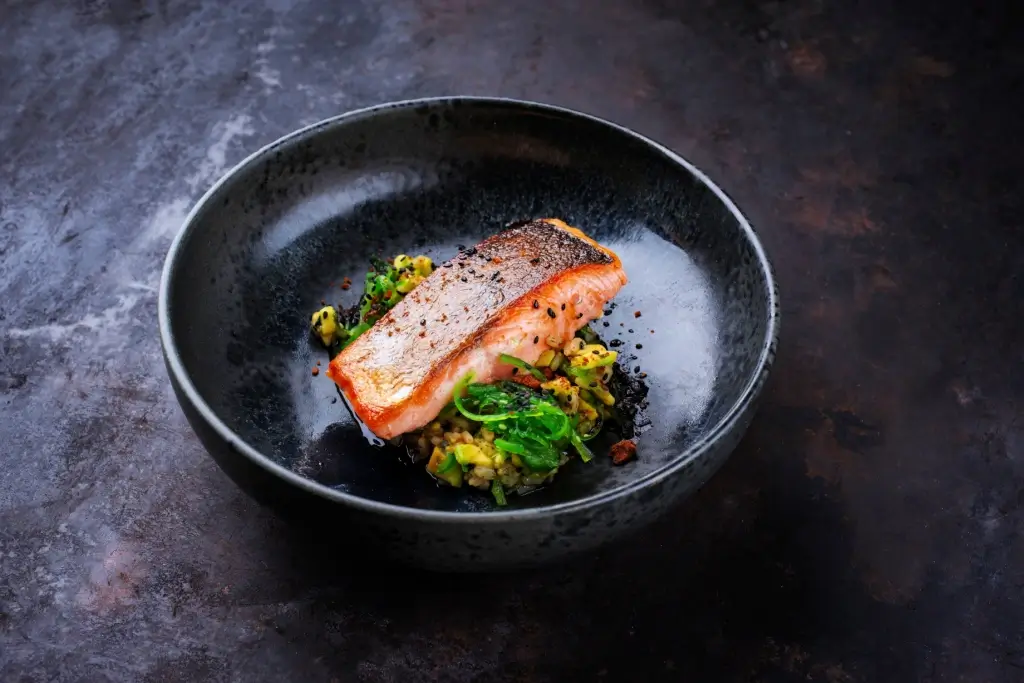
Japanese Fish and Seafood You Should Try This Winter!
As the chilly winds of winter settle in, there’s no better time to explore the rich, comforting flavors of Japanese fish and seafood. With its pristine waters and centuries-old fishing traditions, Japan offers some of the world’s freshest and most unique seafood. Let’s check out a few of them!
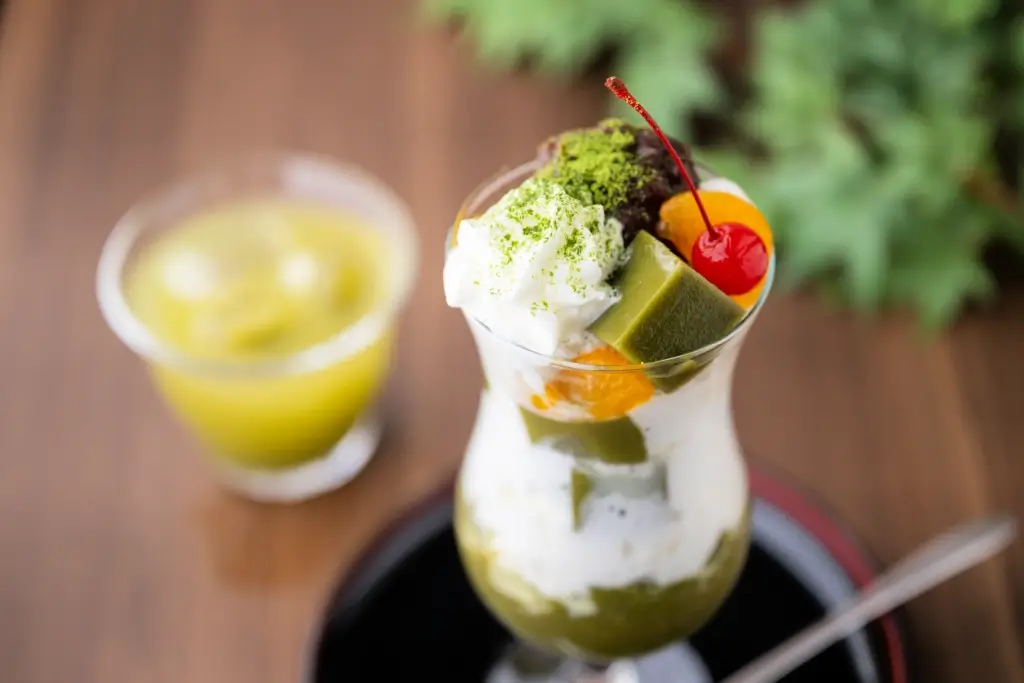
Japanese Parfait is Just One of Many Dessert Classics!
Japanese parfait is just one of many desserts that blend tradition and modern creativity! Be prepared to explore classic desserts in new, creative ways that will leave you wanting more!



